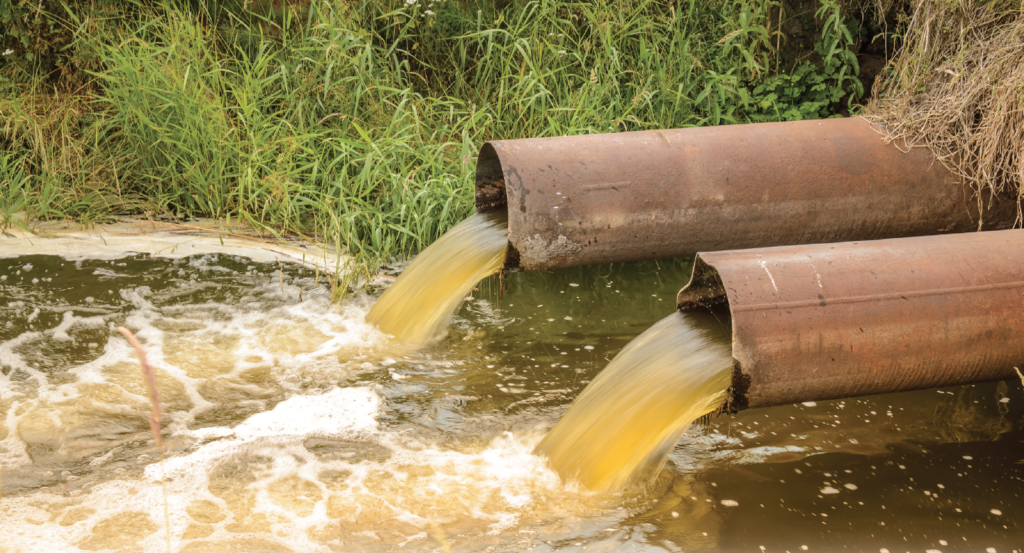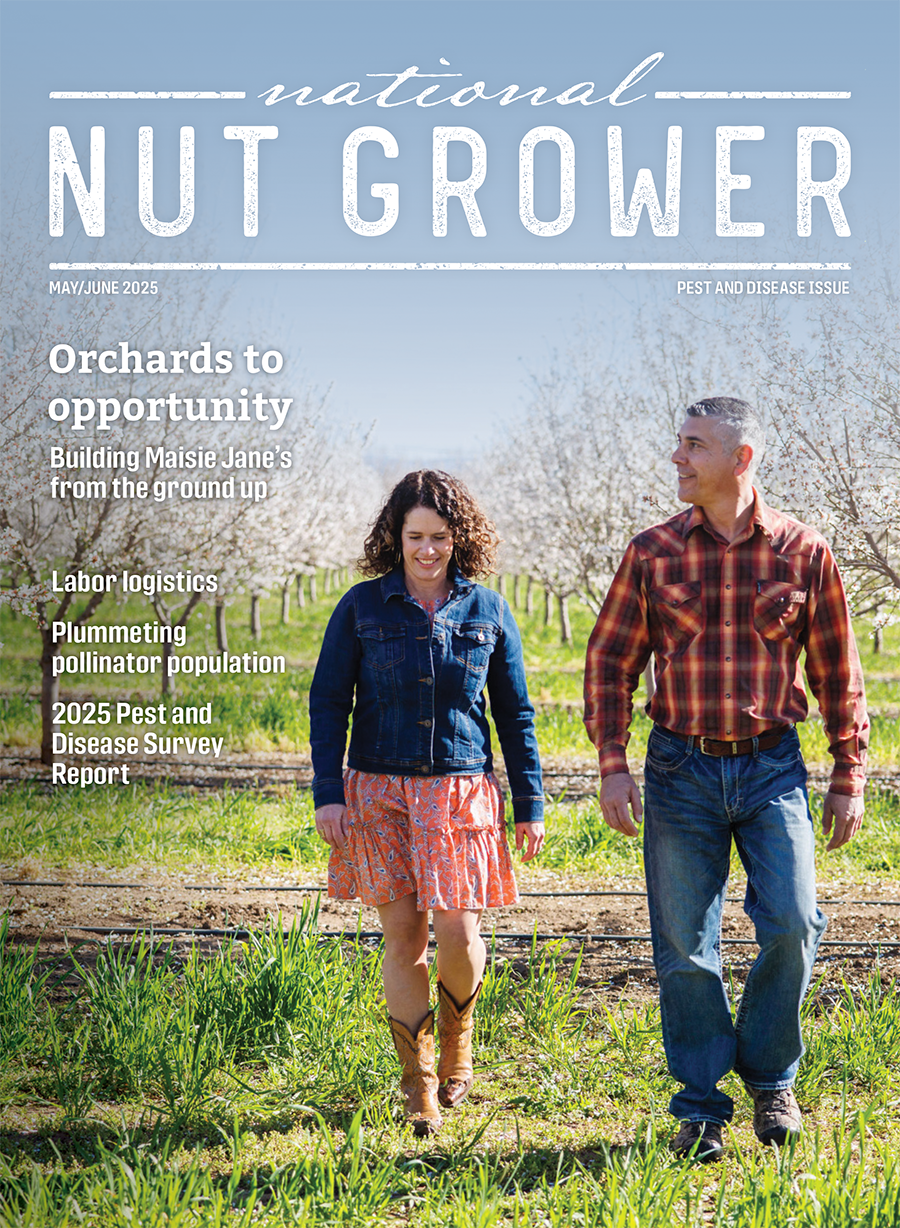
Mar/Apr 2022
Bad water to the rescue?
In groundwater basins all over the state of California, the impact of the Sustainable Groundwater Management Act (SGMA) is starting to become clearer. Basins are all now well along with calculating their sustainable yields, and, unfortunately, for many farmers the SGMA process is going to mean big cuts in their allowable groundwater pumping in order to stay within the calculated levels of sustainable groundwater extraction for their particular basin. Several basins in the state are looking at groundwater cuts of over 30%.
Is fallowing farmland the only possible outcome under this process?
The answer is emphatically no!
SGMA also allows for the creation of new water supplies as an alternate path to bringing basins into balance, and although most people think that means building new dams, or undertaking more water banking and recharge activities, there are lots of other ways to create new water supplies in each basin by converting “bad” or impaired water sources into new fresh water supplies.
The most important thing to realize is that while we may be running out of fresh water – water where total dissolved solids (TDS) levels are under 500 ppm – we are definitely not running out of water itself. There are huge potential reserves of brackish groundwater or otherwise contaminated water sources across the state that can now be turned into new water supplies in cost effective ways due to disruptive new water technologies that are just now coming to market.
This is in part thanks to the focused efforts of a federally and state-funded effort called the National Alliance for Water Innovation (https://www.nawihub.org/about/). This organization is bringing together water researchers and business partners from all across the country to “develop a portfolio of technologies that enable 90% of nontraditional water sources to be treatable at a levelized cost comparable to today’s marginal water supplies.” The good news is that some of these research efforts are already actually bearing fruit – with breakthrough new desalination technologies now coming into the marketplace – just in time to create the substantial new water supplies needed under SGMA.
To understand the potential of being able to use these nontraditional or “impaired” water supplies, let’s consider California’s overall yearly water deficit. The figures across all the water basins in the state appear to suggest that the combined state deficit is around an average 3 million acre-feet per year. That figure seems huge. However, Stanford University’s Water in the West recently published a report estimating that California has perhaps as much as 24 billion acre-feet of brackish groundwater across the state.
Twenty-four billion acre-feet is enough to cover our 3 million acre-feet per year deficit for the next 8,000 years! As just one example, there are huge, very shallow quantities of brackish groundwater down the west side of California’s Central Valley. But these brackish groundwater reserves – because they have not been usable up until now – are essentially invisible in most basins’ SGMA planning processes. And this is in spite of the fact that many of these brackish groundwater reserves are actually growing, unlike freshwater reserves that are shrinking.
And then, along the coast, we have significant seawater intrusion in many, many places – Ventura County, Morro Bay and Salinas, just to name a few. Seawater intrusion in Salinas extends over 5 miles inland now at certain points, with many agricultural wells becoming unusable. Now, according to a profound new hydrological modeling study just recently carried out in Ventura County, these impacted areas could actually be turned into major new sources of area water, with the modeling showing that this new approach would simultaneously halt the further progression of seawater intrusion inland.
Another source of potential new water supply is that many irrigated basins in the state have underlying perforated piping to carry off what is known as “tail water.” The purpose of this piping is to keep the farmland above from becoming waterlogged. This tail water is frequently full of fertilizer runoff, and sometimes also has naturally occurring, but very problematic, minerals in it such as selenium and arsenic. Today in the Central Valley, this water is channeled into huge evaporation ponds where it is evaporated off and lost. In other places, this water is drained into the sea. It is now, however, finally practical to fully clean this water for reuse. We believe there may be 100,000 acre-feet per year or more of this tail water being wasted today across the state.
And then there’s what is known as produced water – water that is naturally mixed with the oil that is being pumped out of the ground. In California, there are about 400,000 acre-feet per year of produced water that could be thoroughly cleaned and used for agriculture. We already have many thousands of acres in the state that have been irrigated with produced water for many years.
Recently published California university multiyear studies now show that there are no detectable harmful impacts on the crops as long as the produced water has first been cleaned properly of the organics and salts that are in it.
By using innovative new zero brine, renewably powered desalination technologies, it’s now finally becoming possible to cost-effectively clean all of these “impaired” water sources so they can be safely used for agriculture.
There are a lot of existing stereotypes about desalination. Many people think desalination technology only involves ocean water, but it can be used on any salty or contaminated water source. Ocean desalination has a well-deserved reputation for being highly expensive ($2,400 per acre-foot and higher), as it requires very expensive infrastructure and consumes a lot of power. It also generates lots of highly salty brine, which then gets dumped back into the ocean with problematic environmental effects. In fact, it’s this traditional generation of brine by desalination technologies (the salts in half or more of the water are pushed through membranes into the remaining volume of water, known as the “brine”) that has blocked almost all inland desalination, because getting rid of the generated brine by trucking it to an ocean outfall for disposal, or to an inland deep well injection site, can be extraordinarily expensive. It also wastes the water in the brine.
The great news is that with the latest technologies, zero brine is possible when desalinating any of the above impaired water sources. Brine can be taken from an older reverse osmosis system and recover all the water in it. These new technologies are characterized as being able to achieve zero liquid discharge (ZLD). ZLD means that all the water in the impaired water source being treated is recovered and available for agricultural use. Only dry salts are left behind. No brine line to the ocean is necessary because there is no salty water brine left to be disposed of.
These new technologies have the added benefit of removing salts from the groundwater basin at the same time new freshwater supplies are created. In fact, within the next several years, several National Alliance for Water Innovation members plan to bring technology to market that will allow for the separation of individual minerals from these recovered salts so that they can be recycled into the manufacturing sector.
These new technologies are containerized, and can be run autonomously with 24/7 remote monitoring. No expensive nfrastructure is required other than a flat concrete or gravel pad and water and utility hookups. The units can also be renewably powered – their power needs are far less than traditional seawater desalination units.
If you have nearby access to one of the impaired water sources mentioned in this article, you can simply have a couple of these containers dropped on site and have a new, reliable freshwater supply as part of your water portfolio. You can count on this new water supply being always available, regardless of how much surface water is being delivered to you this year.









